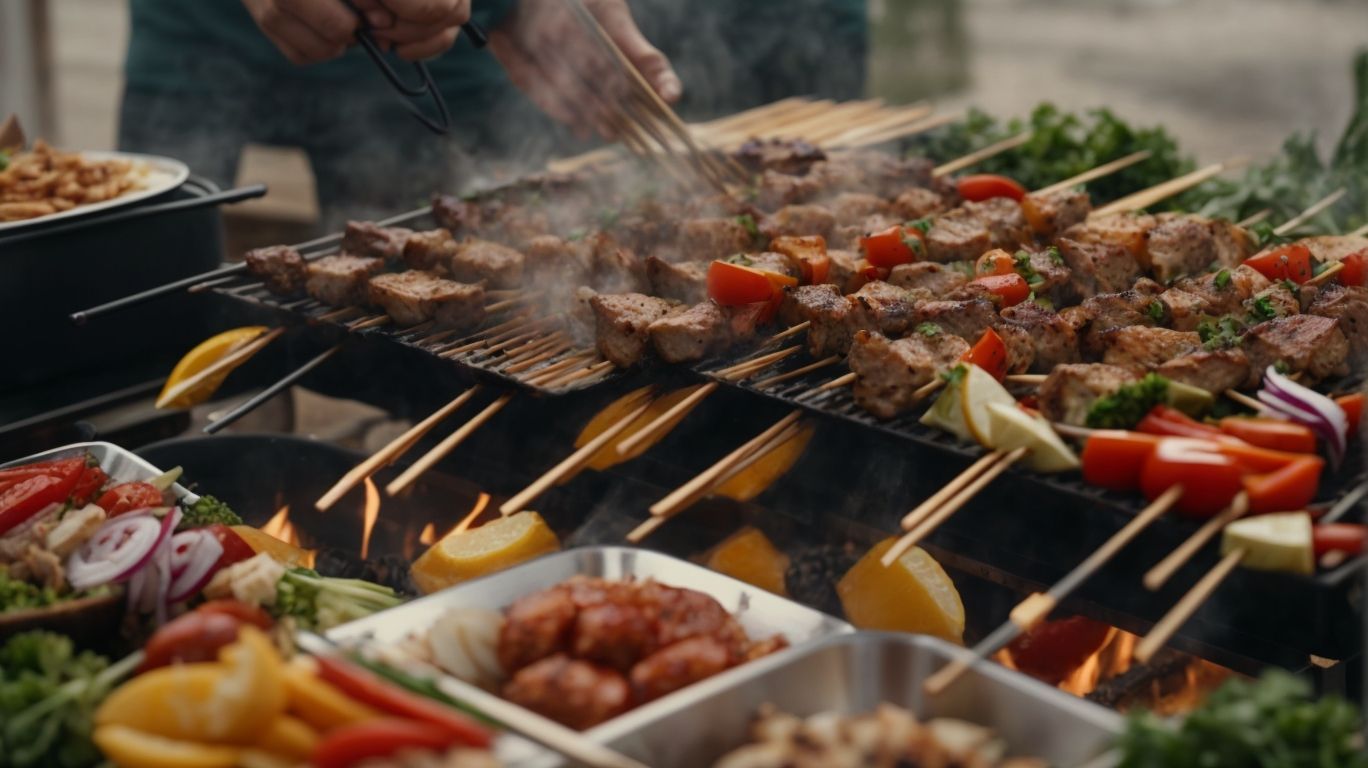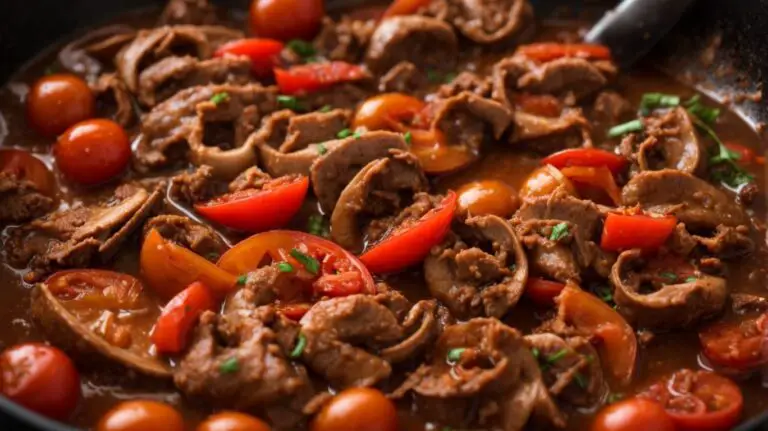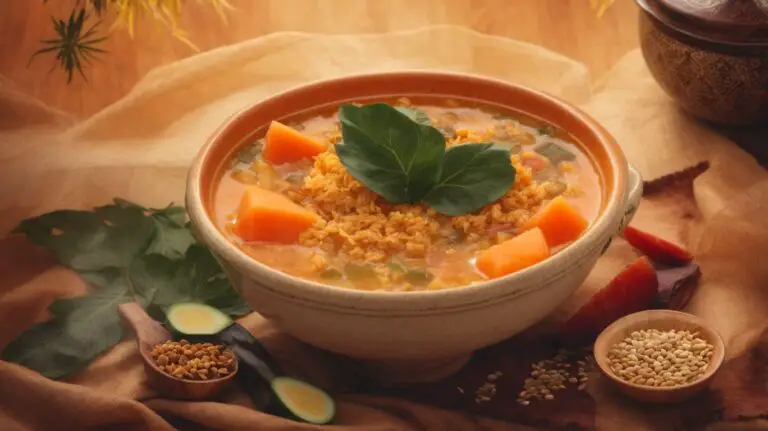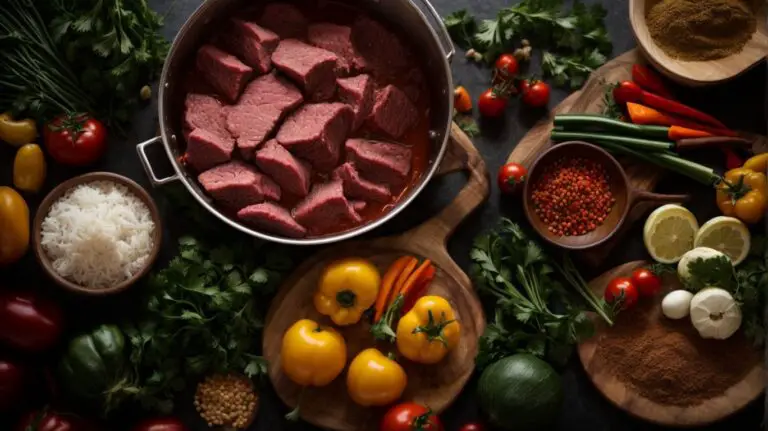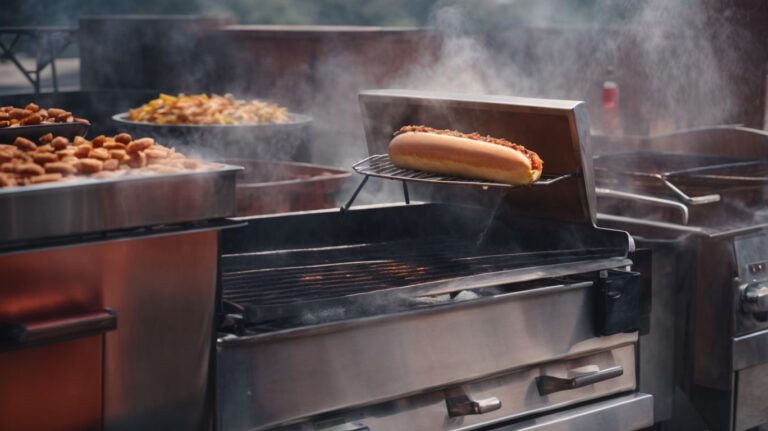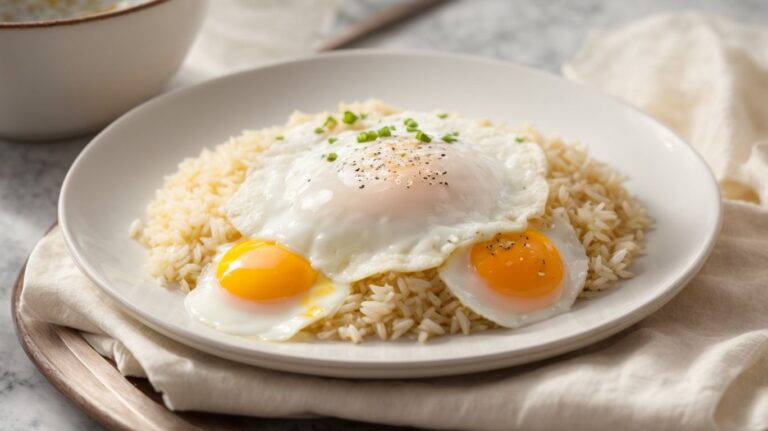How to Cook Kabobs on the Stove?
Have you ever wondered how to cook delicious kabobs on the stove?
In this article, we will explore what kabobs are, why cooking them on the stove is a great option, and how to prepare and cook them to perfection.
From choosing the right meat to marinating it, preparing the vegetables, and cooking the kabobs on the stove, we will cover all the essential steps.
If you want to learn how to make mouth-watering kabobs at home, keep reading for all the tips and tricks!
Key Takeaways:
What Are Kabobs?
Kabobs, also known as kebabs, are a delicious dish consisting of skewered and grilled pieces of meat and vegetables.
This popular dish offers a wide range of possibilities when it comes to ingredients, with options like marinated chicken, beef, lamb, fish, or even vegetarian versions with paneer or tofu. The variety of vegetables that can be included is vast, including bell peppers, onions, mushrooms, zucchini, and cherry tomatoes. The secret to a perfect kabob lies in the marinade, which infuses the ingredients with rich flavors before they hit the grill, ensuring a juicy and tender result.
Why Cook Kabobs on the Stove?
Cooking kabobs on the stove offers a convenient indoor alternative to grilling, allowing for consistent heat control and flavorful results.
Using skillets or cast iron skillets for stovetop kabob cooking can ensure even heat distribution, locking in the juices and flavors of the ingredients. The enclosed environment of a skillet helps the marinated meats and vegetables to cook gently and retain moisture, resulting in succulent bites with rich, developed flavors.
Whether it’s a rainy day, a small apartment balcony, or a lack of outdoor grilling space, stove cooking provides a versatile solution for enjoying kabobs in various environments and weather conditions. Plus, the stove’s control over the heat allows you to adjust temperatures easily, catering to different ingredients and preferences for perfectly cooked kabobs every time.
Preparing the Kabobs
Preparing kabobs involves selecting high-quality ingredients such as top sirloin, bell peppers, and onions, marinating them in a flavorful sauce like Land O Lakes, and skewering them on bamboo sticks.
Choosing the Right Meat
Selecting the right meat is crucial for delicious kabobs, with options like top sirloin for beef lovers and chicken breast tenderloins for a leaner alternative.
Regarding beef kabobs, opting for top sirloin ensures a juicy and flavorful outcome. The marbling in top sirloin keeps the meat tender during cooking, resulting in succulent kabobs.
On the other hand, choosing chicken breast tenderloins for kabobs provides a lighter option without compromising on taste. The tender and mild flavor of chicken breast tenderloins pairs well with various marinades and spices, making them a versatile choice for kabobs.
Marinating the Meat
Marinating the meat is a key step in creating flavorful kabobs, with ingredients like soy sauce, garlic, and pepper infusing the meat with rich tastes.
The marinating process involves allowing the meat to soak in a mixture of these flavor-enhancing ingredients, which not only add taste but also help tenderize the meat.
- For optimal results, marinate the meat in a resealable plastic bag or a covered dish to ensure all pieces are evenly covered.
- It’s crucial to refrigerate the marinating meat to prevent any bacteria growth and marinate for at least 30 minutes up to overnight, depending on the desired intensity of flavor.
By marinating the meat properly, you can achieve kabobs that are bursting with flavor and have the perfect balance of tenderness.
Preparing the Vegetables
Preparing the vegetables for kabobs involves cutting bell peppers, onions, and other vegetables into bite-sized pieces, ensuring even cooking and vibrant colors.
When preparing vegetables for kabobs, it’s essential to pay attention to the size of the cuts to ensure that all the ingredients cook evenly and look appealing on the skewer. Consistency is key in creating kabobs that are not only delicious but visually appealing. Opting for a mix of vegetables like cherry tomatoes can add a burst of flavor and color to your kabobs, making them a hit at any barbecue or gathering.
Cooking the Kabobs on the Stove
Cooking kabobs on the stove can be done using a gas grill, skillet, or non-stick pan, providing a convenient indoor cooking method for delicious results.
Preheating the Pan
Preheating the skillet is essential before cooking kabobs, ensuring that the meat and vegetables sear quickly and evenly for a perfect finish.
Regarding achieving that coveted golden crust on your kabobs, the secret lies in preheating.
Proper preheating of the skillet sets the stage for successful cooking by creating a hot surface that caramelizes the ingredients upon contact. To ensure the pan is ready, give it ample time over medium-high heat until a gentle heat shimmer is visible. A droplet of water flicked onto the surface should sizzle and evaporate instantaneously, indicating it’s time to place your skewers on the pan for that satisfying sear.
Skewering the Kabobs
Skewering the kabobs onto bamboo sticks can be a fun activity for kids, involving arranging meat and vegetables in colorful patterns for an engaging cooking experience.
Encourage the little chefs to get creative by experimenting with different combinations of ingredients like cherry tomatoes, bell peppers, onions, and marinated chicken or beef.
Give them the freedom to design their kabobs with a variety of colors and textures, not only making the food appealing but also stimulating their sense of taste.
Through this process, children can learn about food presentation and flavors in a hands-on and enjoyable way, fostering a love for cooking from a young age.
Cooking the Kabobs
Cooking kabobs in the skillet or cast iron skillet involves searing the meat and vegetables until they are tender, with the option to add mushrooms for extra flavor and texture.
To start, prepare your meat, vegetables, and mushrooms by cutting them into bite-sized pieces for even cooking. Marinate the ingredients in your preferred seasoning blend for at least 30 minutes to enhance the flavors.
Heat a skillet or cast iron skillet over medium-high heat and lightly oil the surface to prevent sticking. Thread the marinated ingredients onto skewers, alternating between meat, vegetables, and mushrooms to create flavorful combinations on each skewer.
Tips for Perfect Kabobs on the Stove
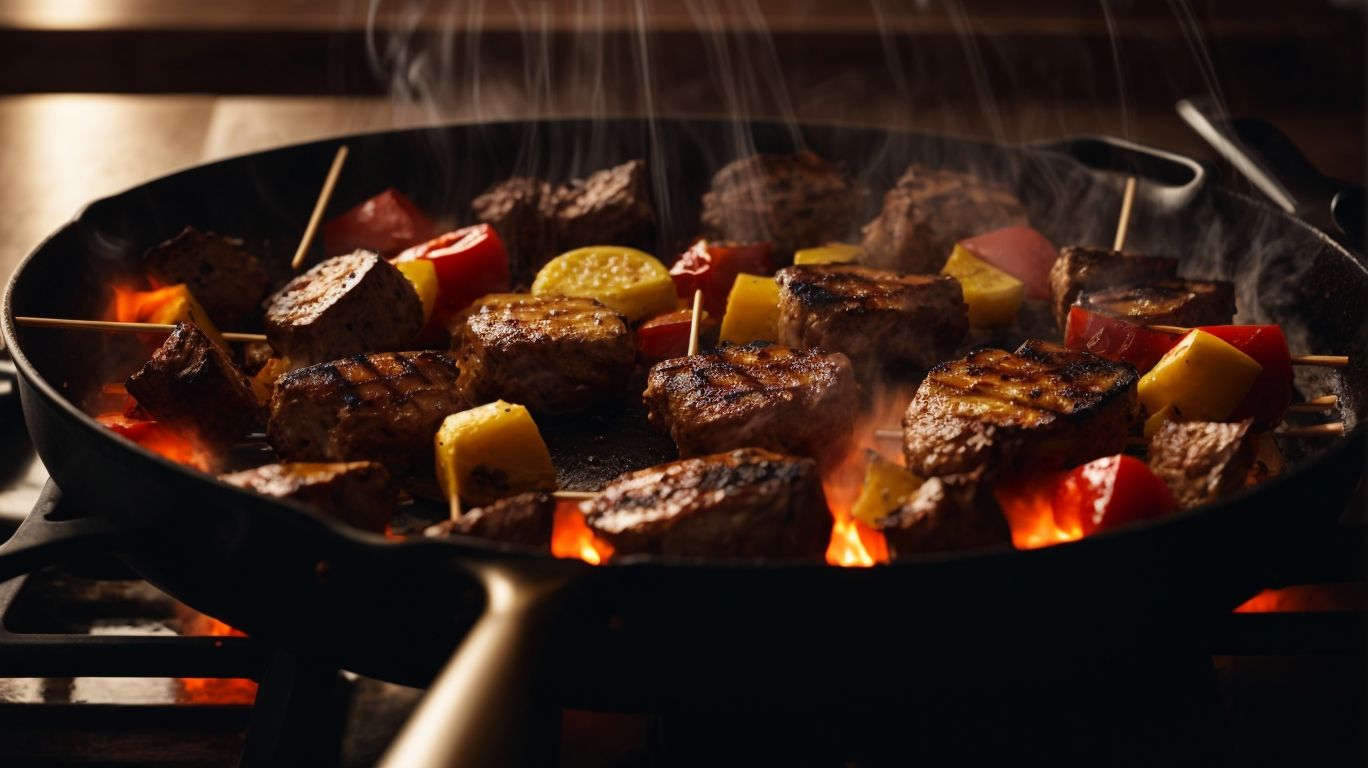
Credits: Poormet.Com – Philip Carter
To create perfect kabobs on the stove, consider attending a cooking class for expert tips, prioritize quick preparation, and savor the delicious results of your efforts.
Using the Right Pan
Choosing the right pan, such as a gas grill or skillet, is crucial for successful kabob cooking on the stove, ensuring even heat distribution and optimal flavors.
Regarding kabob cooking, the type of pan matters a great deal. Gas grills provide that smoky flavor you crave, while a well-seasoned skillet imparts a delicious sear on your kabobs. The material of the pan also plays a significant role. Stainless steel pans conduct heat efficiently, ensuring your kabobs cook evenly. Cast iron pans, on the other hand, retain heat exceptionally well, allowing for a perfect sear. Non-stick pans are ideal for preventing sticking and ensuring easy cleanup post-cooking.
Controlling the Heat
Maintaining control over the heat levels on the gas grill or skillet is essential when cooking kabobs, ensuring that the meat and vegetables cook evenly without burning.
One key aspect of achieving perfectly cooked kabobs is to preheat the grill or skillet properly before adding the skewers. This initial step helps to sear the outside of the ingredients quickly, locking in their juices while creating a delicious crust. Throughout the cooking process, it’s crucial to use tongs to turn the kabobs regularly, promoting even cooking on all sides. Pay close attention to the color and texture of the food to gauge doneness, making adjustments to the heat source as necessary.
Flipping the Kabobs
Flipping the kabobs at regular intervals on the gas grill or skillet promotes even cooking and caramelization, resulting in deliciously charred exteriors and juicy interiors.
When flipping kabobs, remember that each side needs adequate time on the heat to develop those appealing grill marks and flavors. A general rule of thumb is to turn the kabobs every 5-7 minutes. This interval allows the heat to sear each side evenly without overcooking or burning the ingredients.
Mastering the technique of flipping is crucial. Use long-handled tongs to gently rotate the skewers, ensuring a smooth transition without causing the ingredients to fall off. Be mindful not to overcrowd the grill to allow proper air circulation and heat distribution, enhancing the cooking process.
Serving and Enjoying the Kabobs
Serving kabobs on warm plates enhances the dining experience, allowing guests to enjoy the flavorful combination of meat, vegetables, and seasonings in each delicious bite.
When kabobs are served on warm plates, it not only helps in retaining the ideal temperature of the dish but also adds an element of sophistication to the presentation. The gentle warmth from the plate keeps the meats tender and juicy, while the vegetables maintain their vibrant colors and flavors.
To elevate the overall dining experience, consider pairing the kabobs with
- complementary side dishes such as fragrant basmati rice, tangy tzatziki
- crisp pickled vegetables,
- or a refreshing crunchy salad with a light vinaigrette dressing
These side dishes provide a balanced accompaniment to the robust flavors of the kabobs, creating a complete and satisfying meal for your guests.
Frequently Asked Questions
How to Cook Kabobs on the Stove?
1. What are the benefits of cooking kabobs on the stove rather than on a grill?
Cooking kabobs on the stove allows for more control over the cooking temperature and results in evenly cooked and juicy kabobs. It also eliminates the need for an outdoor grill, making it a convenient option for those who live in apartments or have limited outdoor space.
2. What type of pan should I use to cook kabobs on the stove?
A heavy-bottomed pan, such as a cast iron or stainless steel pan, works best for cooking kabobs on the stove. This type of pan ensures even heat distribution and prevents the kabobs from sticking to the surface.
3. Do I need to marinate the kabobs before cooking them on the stove?
While marinating the kabobs can add flavor, it is not necessary for cooking them on the stove. You can season the kabobs with spices and herbs directly on the pan for a quick and easy option.
4. How do I prevent the kabobs from sticking to the pan?
To prevent the kabobs from sticking to the pan, make sure to lightly oil the pan before cooking. You can also brush some oil onto the kabobs themselves to prevent them from sticking.
5. How long does it take to cook kabobs on the stove?
The cooking time for kabobs on the stove can vary depending on the type and size of the meat or vegetables used. Generally, it takes about 10-15 minutes to cook kabobs on medium-high heat, flipping them occasionally for even cooking.
6. Can I use wooden skewers to make kabobs on the stove?
Yes, you can use wooden skewers to make kabobs on the stove. Soak the skewers in water for 30 minutes before skewering the meat and vegetables to prevent them from burning on the stove. Alternatively, you can use metal skewers for a more durable option.

